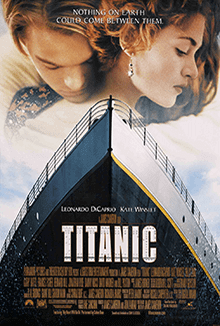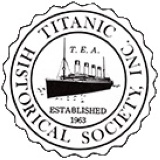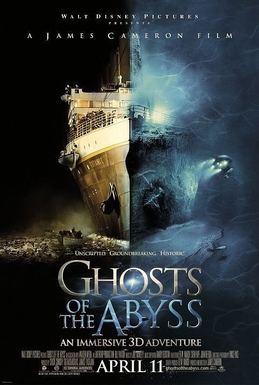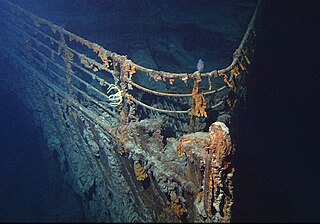Related Research Articles

James Francis Cameron is a Canadian filmmaker. He is a major figure in the post-New Hollywood era, and one of the industry's most innovative filmmakers. He often uses novel technologies with a classical filmmaking style. He first gained recognition for writing and directing The Terminator (1984) and found further success with Aliens (1986), The Abyss (1989), Terminator 2: Judgment Day (1991), and the action comedy True Lies (1994). He wrote and directed Titanic (1997), Avatar (2009) and its sequels, with Titanic winning Academy Awards for Best Picture, Best Director, and Best Film Editing. He is a recipient of various other industry accolades, and three of his films have been selected for preservation in the National Film Registry by the Library of Congress.

The Abyss is a 1989 American science fiction film written and directed by James Cameron and starring Ed Harris, Mary Elizabeth Mastrantonio, and Michael Biehn. When an American submarine sinks in the Caribbean, a US search and recovery team works with an oil platform crew, racing against Soviet vessels to recover the boat. Deep in the ocean, they encounter something unexpected.

Titanic is a 1997 American romantic disaster film directed, written, produced, and co-edited by James Cameron. Incorporating both historical and fictionalized aspects, it is based on accounts of the sinking of RMS Titanic in 1912. Kate Winslet and Leonardo DiCaprio star as members of different social classes who fall in love during the ship's maiden voyage. The film also features an ensemble cast of Billy Zane, Kathy Bates, Frances Fisher, Gloria Stuart, Bernard Hill, Jonathan Hyde, Victor Garber, David Warner, Suzy Amis and Bill Paxton.

The Titanic Historical Society, Inc. (THS) is a non-profit organization founded on July 7, 1963, whose purpose is the preservation of the history of the famous ocean liner RMS Titanic, which sank in 1912, in one of the greatest maritime disasters in history.

On April 14, 1912, the Titanic collided with an iceberg, damaging the hull's plates below the waterline on the starboard side, causing the front compartments to flood. The ship then sank two hours and forty minutes later, with approximately 1,496 fatalities as a result of drowning or hypothermia. Since then, many conspiracy theories have been suggested regarding the disaster. These theories have been refuted by subject-matter experts.

Ghosts of the Abyss is a 2003 American documentary film produced by Walden Media. It was directed by James Cameron after his 1997 film Titanic. During August and September 2001, Cameron and a group of scientists staged an expedition to the wreck of the RMS Titanic and dived in Russian deep-submersibles to obtain more detailed images than anyone had before. Using two small, purpose-built remotely operated vehicles, the documentary offers glimpses into the Titanic wreck and, with CGI, superimposes the ship's original appearance on the deep-dive images.

The R/V Akademik Mstislav Keldysh is a 6,240 ton Russian scientific research vessel. It has made over 50 voyages, and is best known as the support vessel of the Mir submersibles. The vessel is owned by the Shirshov Institute of Oceanology of the Russian Academy of Sciences in Moscow, and is homeported in Kaliningrad on the Baltic Sea. Named after the Soviet mathematician Mstislav Keldysh, it usually has 90 people on board. Among its facilities are 17 laboratories and a library.

The Titanic has played a prominent role in popular culture since her sinking in 1912, with the loss of over 1,500 of the 2,200 lives on board. The disaster and the Titanic herself have been objects of public fascination for many years. They have inspired numerous books, plays, films, songs, poems, and works of art. The story has been interpreted in many overlapping ways, including as a symbol of technological hubris, as basis for fail-safe improvements, as a classic disaster tale, as an indictment of the class divisions of the time, and as romantic tragedies with personal heroism. It has inspired many moral, social and political metaphors and is regularly invoked as a cautionary tale of the limitations of modernity and ambition.

The set of large ornate staircases in the first-class section of the Titanic, and RMS Olympic ; sometimes collectively referred to as the Grand Staircase, is one of the most recognizable features of the British transatlantic ocean liner which sank on her maiden voyage in 1912 after a collision with an iceberg. Reflecting and reinforcing the staircase's iconic status is its frequent, and prominent, portrayal in media.

Eliza Gladys Dean, known as Millvina Dean, was a British civil servant, cartographer, and the last living survivor of the sinking of the RMS Titanic on 15 April 1912. At two months old, she was also the youngest passenger aboard.

Kinney Heights is a neighborhood in Los Angeles, California, bounded by Arlington, 23rd, Adams, and Hermosa, just south of Interstate 10. Kinney Heights is a subdistrict of the West Adams district of South Los Angeles, California; Curbed also associates it with Jefferson Park.
Titanic: The Complete Story is a 1994 American two-part documentary chronicling the story of the ocean liner RMS Titanic which sank on its maiden voyage in 1912. It is a compilation of a four-hour documentary special produced by A&E Television Networks in 1994. A&E Home Video originally sold the entire documentary in a 4-tape VHS set and later a DVD release. It is considered by many critics and historians to be the definitive documentary regarding the Titanic. It is most famous for being one of the few Titanic documentaries to feature survivors.
Ken Marschall is an American painter and illustrator notable for his paintings of famous ocean liners, such as the RMS Titanic, RMS Lusitania, and the HMHS Britannic, and other transportation vessels including the Bismarck, LZ 127 Graf Zeppelin and LZ 129 Hindenburg. His paintings have been used in many books about the Titanic, most notably his depictions of the sinking, of which no photographs that could be used were taken.

James Cameron is a Canadian director, screenwriter, and producer who has had an extensive career in film and television. Cameron's debut was the 1978 science fiction short Xenogenesis, which he directed, wrote and produced. In his early career, he did various technical jobs such as special visual effects producer, set dresser assistant, matte artist, and photographer. His feature directorial debut was the 1982 release Piranha II: The Spawning. The next film he directed was the science fiction action thriller The Terminator (1984) which starred Arnold Schwarzenegger as the titular cyborg assassin, and was Cameron's breakthrough feature. In 1986, he directed and wrote the science fiction action sequel Aliens starring Sigourney Weaver. He followed this by directing another science fiction film The Abyss (1989). In 1991, Cameron directed the sequel to The Terminator, Terminator 2: Judgment Day, and also executive produced the action crime film Point Break. Three years later he directed a third Schwarzenegger-starring action film True Lies (1994).

The TitanicMusicians' Memorial is a memorial in Southampton, United Kingdom, to the musicians who died in the RMS Titanic disaster on 15 April 1912. The original Titanic Musicians' Memorial was unveiled by the Mayor of Southampton, H Bowyer on 19 April 1913, and was located in the old Southampton library. This library along with the memorial were destroyed during World War II. A replica was erected in 1990. The plaque features a musical inscription, the opening bars of the 19th century hymn, 'Nearer, My God, to Thee' by Sarah Flower Adams, carvings showing a grieving woman and an iceberg, and an inscription with the names of the musicians on the Titanic, including bandleader Wallace Hartley, all of whom died.
Phoenix International Holdings, Inc. (Phoenix) is a marine services company that performs manned and unmanned underwater operations worldwide.

The wreck of the Titanic lies at a depth of about 12,500 feet, about 370 nautical miles south-southeast off the coast of Newfoundland. It lies in two main pieces about 2,000 feet (600 m) apart. The bow is still recognisable with many preserved interiors, despite deterioration and damage sustained hitting the sea floor. In contrast, the stern is heavily damaged. A debris field around the wreck contains hundreds of thousands of items spilled from the ship as she sank. The bodies of the passengers and crew would also be distributed across the sea bed, but have since been consumed by other organisms.

Reflecting the White Star Line's reputation for superior comfort and luxury, the Titanic had extensive facilities for First Class passengers which were widely regarded as the finest of her time. In contrast to her French and German competitors, whose interiors were extravagantly decorated and heavily adorned, the Titanic emphasized comfort and subdued elegance more in the style of a British country manor or luxury hotel. Titanic's enormous size enabled her to feature unusually large rooms, all equipped with the latest technologies for comfort, hygiene, and convenience. Staterooms and public spaces recreated historic styles with a painstaking attention to detail and accuracy. There was a wide range of recreational and sporting facilities in addition which provided ample opportunity for amusement during a voyage.

Edith Louise Rosenbaum Russell was an American fashion buyer, stylist and correspondent for Women's Wear Daily, best remembered for surviving the 1912 sinking of the RMS Titanic with a music box in the shape of a pig. The papier-mâché toy, covered in pigskin and playing a tune known as "The Maxixe" when its tail was twisted, was used by Edith Russell to calm frightened children in the lifeboat in which she escaped. Her story became widely known in the press at the time and was later included in the best-selling account of the disaster A Night to Remember by Walter Lord. Russell was also portrayed in the award-winning British film produced by William MacQuitty that was based on Lord's book.
Second-class accommodation and facilities on board the Titanic were quite intricate and spacious in comparison to many first-class facilities on other ships of the time. Although the second- and third-class sections of the ship occupied a much smaller proportion of space overall than those of first class aboard the Titanic, there were several comfortable, large public rooms and elevators for the passengers to enjoy, so much in fact that the minority of the spaces provided were actually used during the voyage. 284 passengers boarded second class in a ship that could accommodate 410 second-class passengers.
References
- ↑ Maxtone-Graham, John (13 December 1992). "It Was Sad When That Great Ship Went Down (book review)". New York Times. Retrieved 2 December 2018.
- ↑ Lynch, Don (1992). Titanic – An Illustrated History. New York City: Hyperion. ISBN 1-56282-918-1.
- 1 2 "James Cameron's Titanic". Media Awareness Network. Archived from the original on 2011-06-09. Retrieved 2010-01-24.
- ↑ Lynch, Don; Cooper, Suzanne Tarbell; John, Kurtz (2008). "Introduction". Images of America - West Adams. Arcadia Publishing. p. 7. ISBN 978-0-7385-5920-9 . Retrieved 24 December 2023.
back cover: Don Lynch is the author of the best seller "Titanic - An Illustrated History".